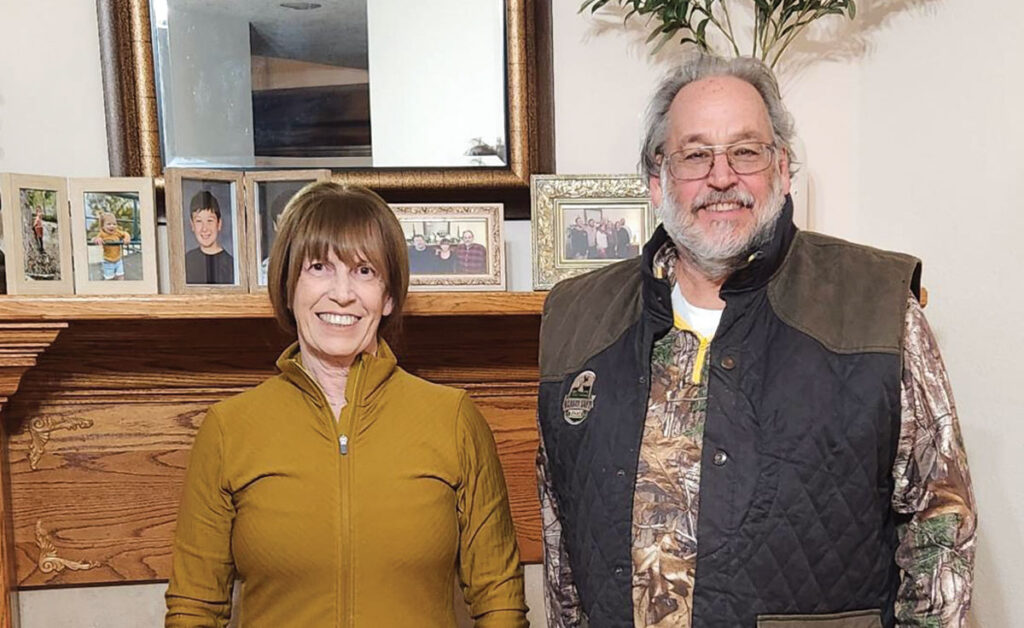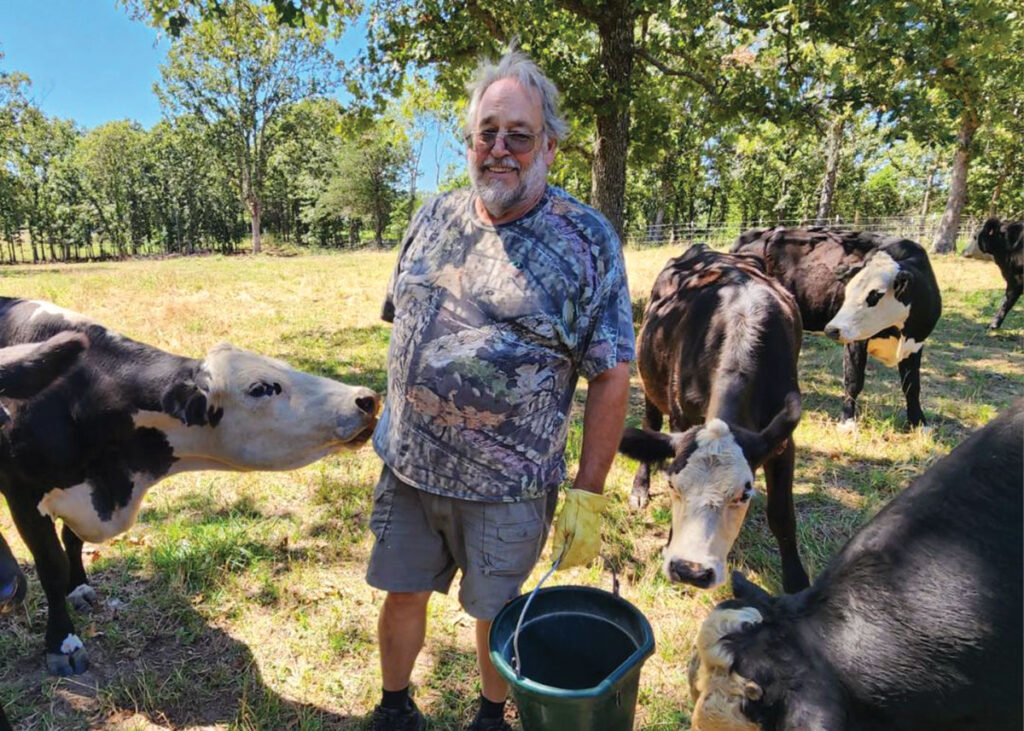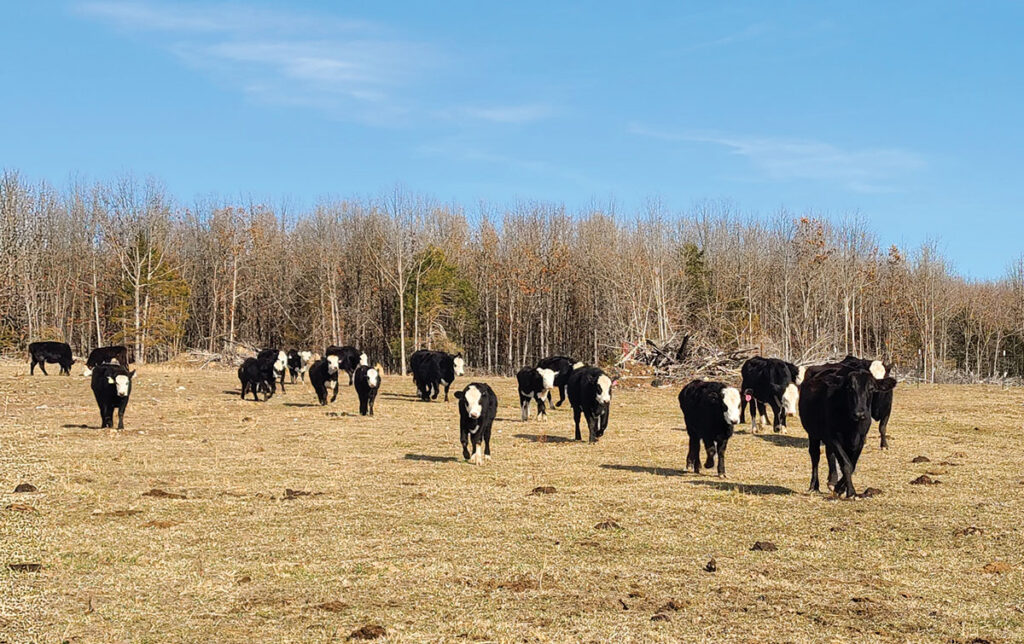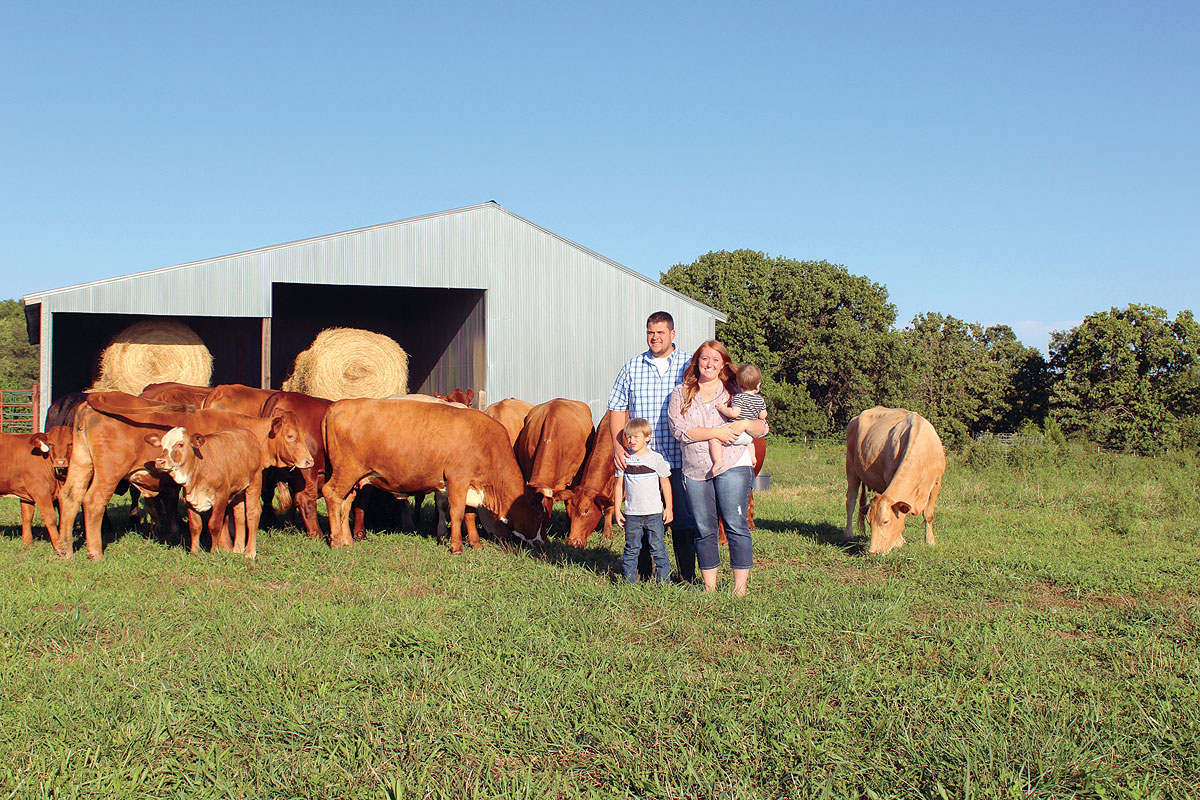
Siblings return to their farming roots
GROVESPRING, MO. – Randy Neasby of Lebanon, Mo., will be the first to admit, he is living a dream, raising Black Herefords in rural Laclede County.
An engineering technician raised in Kansas City, with deep Southwest Missouri family roots, returned to Laclede County upon retirement. He worked an additional decade for the city of Lebanon and is now appreciating the country life his parents and grandparents once knew.
“A few years ago, my sister, who lives in St. Louis said, ‘You know, we should look into buying some land down there. You could go hunting and fishing; it would be an investment.’ The next thing you know, we were raising cows.”
Randy and his sister, Carol Sapp, now own the 126-acre Neasby-Sapp Farm on which they have about 30 head of registered Black Herefords and a few black baldies. Their father’s family farm was in the Phillipsburg area and their mother was from the Grovespring area. As he and Carol began to look for land, they found acreage several miles outside of Grovespring. They both have great childhood memories of visiting their grandparents on the family farms.
“Growing up, I’d see commercial cattle of all colors as we drove across the county and then I’d see my great-grandad’s red Herefords. I thought they were the prettiest cows I’d ever seen,” Randy said.
As he began to look into the realities of the cattle market of the 21st century, he discovered Black Herefords, and like other black cattle breeds in this area, they are high sellers.

“The Herefords are a little more docile and feed efficient than many other breeds,” Randy explained. “The Angus influence adds weight and they tend to carry a bit more meat on the carcass. We had our latest Black Hereford bull DNA tested and that can determine as it did in this case, that he is what they call homogzygous.”
He went on to explain that all of the bull’s progeny will have the same black hide, overriding other genetic factors in Herefords that can still throw back to a red Hereford. It also means they will have a little faster growth rate, especially in their first couple of breedings, Randy said.
“At this time, we’re just using him and haven’t gotten into AI or anything like that. We may look at that in another couple of years,” Randy said of the Neasby-Sapp breeding program.
Randy said after four years, they are just getting to a point where they will be selling their animals by private treaties.
“We are still feeling our way along, looking for the best way to market, looking for that little niche market,” Randy said.
Randy has found locally-sourced hay and a commercial cattle feed from a local mill suits the needs of his herd.
“My grandfather worked at the MFA in Grovespring which is still in the same building, I remember visiting with him when I was a kid,” Randy recalled. “They sold groceries as well back then so sometimes I go back there. I can’t help but think of him often when I’m out with the cows, walking across a field. I feel very lucky to be doing this at this point in my life.”
The Neasby-Sapp farm is a member of the American Black Hereford Association, and Randy and Carol are enthusiastic about promoting the breed and educating others on the advantages of their attributes. “I’d just like to get more information out there to people in this area. I’d be happy to talk to anyone who wants to know more about Black Herefords.
“Our motto is we’re raising pretty and happy cows or maybe just pretty happy cows,” Randy said with a chuckle.








